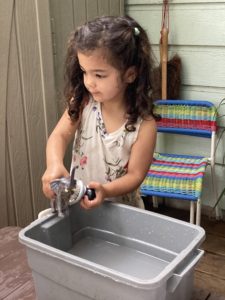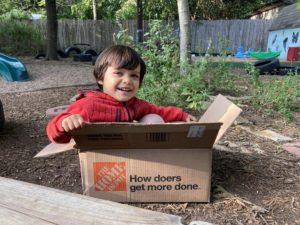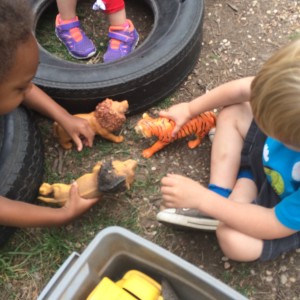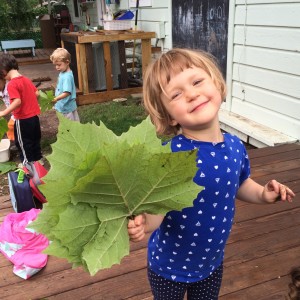This fall, enjoying the outdoors is our #1 prevention tactic against “the virus”–as the children call it. As such, it seems appropriate to use this space to discuss just how our playground operates.

This post is not about is how, little-by-little, we’re bringing our Montessori academic materials outside–that’s an on-going, still-evolving structural change to be discussed later. This post is not about nature–which we love. Nor is is about Montessori materials–which we also have outside. This post is about imaginative PLAY and how it helps children to grow and mature.
A few weeks into the new school year, and it’s obvious that the children are thriving outside. At any given time you are likely to see a trip to the doctor, getting on the bus, cooking in the kitchen, traveling to China, collecting bugs or rocks or just chatting with friends. What is really happening is that these children are practicing gross motor skills, refining fine motor skills, measuring volumes, practicing listening skills, counting quantities or maybe just finding their place during these strange times.
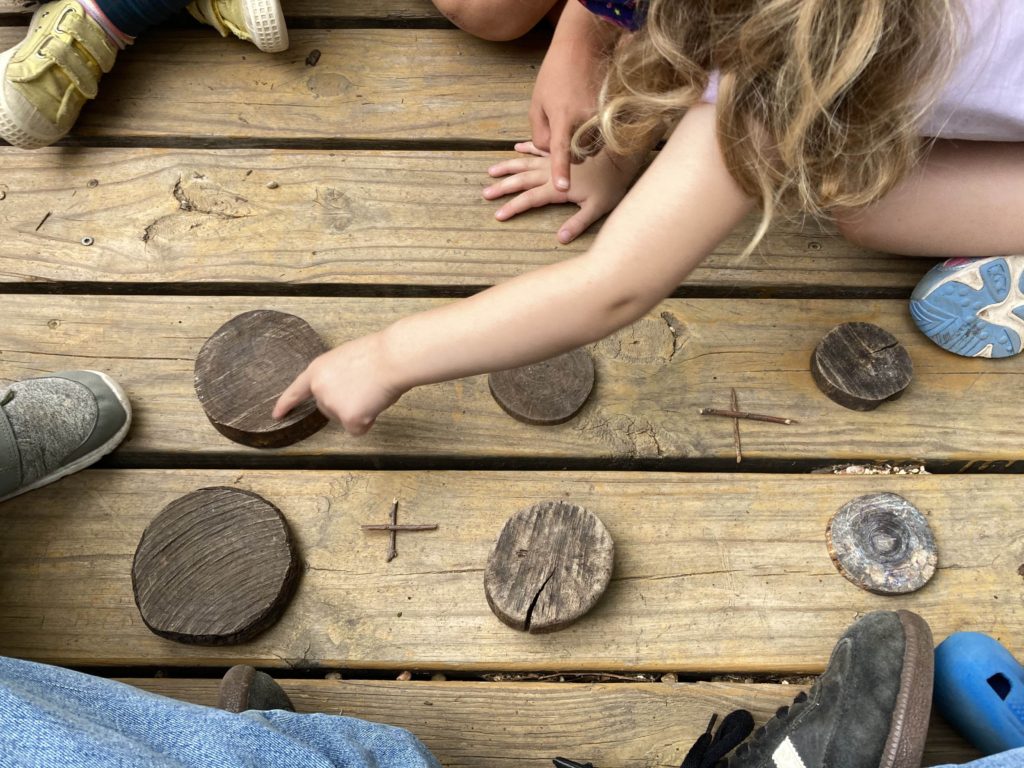
At HMS, we don’t have the normal collection of toys. Instead, we subscribe to the “loose parts” idea of play. We have a variety of normal, everyday objects that children may use for any purpose. These items, both natural and man-made, inspire the imagination in myriad ways. We have pots and pans, old tires and soap bottles. We have tree stumps and tree bark. We dig holes with real shovels and make phone calls with pretend phones (wait, is that a piece of scrap lumber?). That sycamore leaf might be a laptop, a mirror or a dinner plate.
Exactly what the children play is completely up to them. How they play is more of interest of the teachers. We encourage them to figure things out on their own. We help them choose games to play that are safe–for themselves and each other. We remind them to check in with their friends who fall down, to give each other clear messages, and listen when friends do the same. These are all aspects are the Social-Emotional-Learning that we know is so important to their growing brains.

In imagining together with loose parts, the children are becoming adept at figuring things out on their own. They are becoming problem solvers. By solving one problem creatively, to then share their idea and play with others they must next become skilled at explaining it to their friends.
The pretend doctors, computer programmers and chefs on today’s playground are well on their way to becoming tomorrow’s doctors, computer programmers and chefs. And, who knows, maybe a future president…
We’ve all heard the quote “Play is the work of childhood” in one form or another. We at HMS do truly believe the truth therein, and we are confident that Maria Montessori herself would have agreed.
